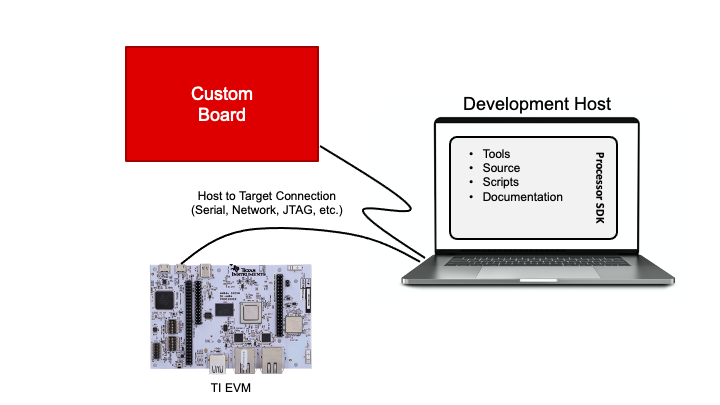3. Develop Linux on TI EVM¶

This Academy module focuses on Developing Linux on a TI EVM. This content extends what was done in the Evaluating Linux module, but stays focused on what can be done on a TI board. To go further, new custom hardware has to be developed. Once new hardware comes into the picture, the exciting task of porting Linux to a custom platform can begin. With Linux ported to new hardware, further development beyond what can be done on a TI EVM is enabled.
Fortunately, the development environment for working with Linux is similar for all types of hardware. Setting up this environment can largely be done even without a board at all, but validation of a working system requires hardware. The differences between the available TI boards and the target system will dictate how much software development can be done without custom hardware. Many software features can usually be developed using TI boards.
For example, if the target system uses networking, software above the network interface (eth0, eth1, etc.) can usually be developed on TI boards as most TI boards have network interfaces. This hardware abstraction is one of the key values of Linux and allows software development to overlap hardware Development to shorten total system design timelines.
The rest of this module describes setting up a good development environment, which should work well for TI EVMs as well as custom hardware. This environment will enable users to start making changes to the SDK components (U-Boot, Linux, etc.) It also enables building application code like a simple “Hello World” and beyond.

